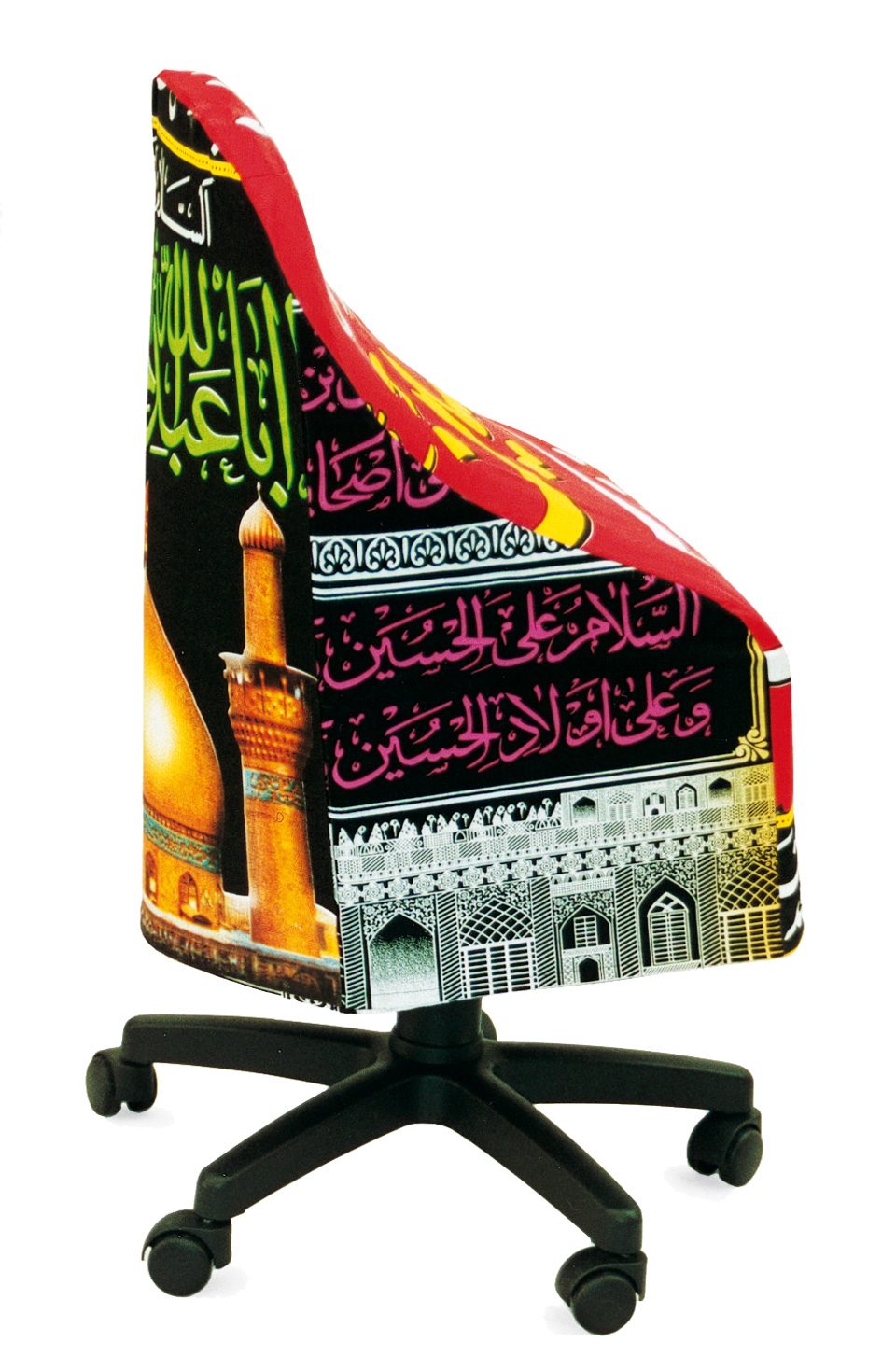In her work Funeral Parastou Forouhar has taken fabrics that seem merely decorative to western eyes, but which are used traditionally in Iranian mourning ceremonies, and has made them into covers for office chairs. Grouped together, they form a brightly coloured ensemble that combines the familiar with the exotic. This alternation between near and far both activates and excludes the viewer at one and the same time. Ornament and calligraphy in lurid neon hues printed on a black ground are superimposed on the fabric to fill the entire surface with the characteristic horror vacui of Islamic art. The verses, written and spoken in Farsi, have an undulating, ecstatic rhythm, and refer to the death of Imam Hossein. Parastou Forouhar deliberately uses the visually animistic effect of calligraphy in her works as a kind of self-orientation. She does so without ever falling into the trap of exoticism, for she taps into the dovetailing and layering of different cultures. Even for those who do not understand Farsi, the eastern horror vacui component is distilled to an almost oppressive situation. Visual elements such as the hand of Fatima are introduced into empty spaces to emphasise the power and omnipotence of Allah. And so, in the installation, they lose their decorative character and, instead, remind us of the situation that has taken hold since the Iranian revolution, in which every aspect of life is governed and determined by Islamic sharia law. Although the eastern cultural stereotype is visually predominant in the installation Trauerfeier, the sheer ordinariness of a functional object so closely associated with bureaucracy breaks through any such false legibility. Because of the stringency and simplicity of the installation, the viewer can make associations freely and can easily recognise that Islamic ornament is also a recognisable expression of an extremely strict legal system. Through the physical presence that each individual object in Trauerfeier possesses, which is heightened all the more in the overall ensemble, terror and beauty enter into a thoroughly cynical synthesis. Britta Schmitz
Funeral, 2003
Ikea office chairs, "Ashura" banners, cardboard, cotton wadding
 The critical eye, Kunstverein Aschaffenburg, 2006
The critical eye, Kunstverein Aschaffenburg, 2006


 Thousnad and One days, National Gallery at Hamburger Bahnhof, Berlin, 2003
Thousnad and One days, National Gallery at Hamburger Bahnhof, Berlin, 2003





